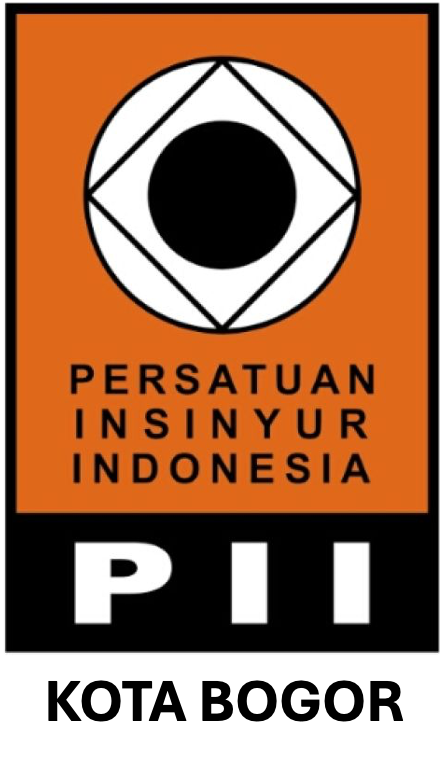Analisis Serangan Sulfat pada Self Compacting Concrete (SCC) menggunakan Variasi Penambahan Silica fume dengan Metode Perubahan Panjang
Abstract
Beton adalah salah satu material yang sering dijumpai pada struktur konstruksi. Hal ini menjadikan beton harus memiliki ketahanan terhadap kondisi lingkungan sekitar, baik dalam kondisi kering maupun basah. Tak sedikit di lingkungan sekitar terdapat bahan agresif seperti sulfat yang dapat menurunkan durabilitas dan sifat mekanis beton. Dalam rangka mengatasi permasalahan tersebut peneliti menggunakan bahan tambah silica fume untuk meningkatkan ketahanan pada beton terhadap serangan sulfat. Dalam penelitian ini, rancangan campuran beton dibuat menurut metode ACI dengan kuat tekan rencana 25 MPa. Pengujian ketahanan beton terhadap serangan sulfat dilakukan dengan perendaman benda uji siklus kering-basah pada larutan Natrium Sulfate (Na2SO4) dengan konsentrasi 5% dengan variasi penambahan silica fume 0%, 8%, dan 10%. Benda uji berupa silinder beton berdiameter 15 cm dan tinggi 30 cm untuk menguji kuat tekan beton dan kehilangan berat setelah direndam dalam larutan sulfat. Sedangkan untuk pengujian perubahan panjang menggunakan benda uji balok mortar dimensi 285 mm x 25 mm x 25 mm. Hasil pengujian didapatkan kadar optimum penambahan silica fume sebesar 8% pada beton dengan perendaman larutan sulfat yang berkontribusi meningkatkan nilai kuat tekan beton sebesar 44,91% dan mengurangi efek ekspansi pada mortar hingga 53,39%, sedangkan kadar 10% mengurangi kehilangan berat hingga 0,15% dibandingkan beton tanpa bahan tambah silica fume.
Downloads
References
H. Sasanipour, F. Aslani, and J. Taherinezhad, “Effect of silica fume on durability of self-compacting concrete made with waste recycled concrete aggregates,” Constr. Build. Mater., vol. 227, p. 116598, 2019, doi: 10.1016/j.conbuildmat.2019.07.324.
D. Susanto, Z. Djauhari, and M. Olivia, “Karakteristik Beton Portland Composite Cement (PCC) Dan Silica fume Untuk Aplikasi Struktur di Daerah Laut,” J. Rekayasa Sipil, vol. 15, no. 1, p. 1, 2019, doi: 10.25077/jrs.15.1.1-11.2019.
G. Zhao, J. Li, and W. Shao, “Effect of mixed chlorides on the degradation and sulfate diffusion of cast-in-situ concrete due to sulfate attack,” Constr. Build. Mater., vol. 181, pp. 49–58, 2018, doi: 10.1016/j.conbuildmat.2018.05.251.
N. Shanahan and A. Zayed, “Cement composition and sulfate attack. Part I,” Cem. Concr. Res., vol. 37, no. 4, pp. 618–623, 2007, doi: 10.1016/j.cemconres.2006.12.004.
S. Oymael, “The effect of sulphate on length change of concrete,” Oil Shale, vol. 24, no. 4, pp. 561–571, 2007, doi: 10.3176/oil.2007.4.07.
J. Haufe and A. Vollpracht, “Tensile strength of concrete exposed to sulfate attack,” Cem. Concr. Res., vol. 116, no. June 2018, pp. 81–88, 2019, doi: 10.1016/j.cemconres.2018.11.005.
A. M. Saba et al., “Strength and flexural behavior of steel fiber and silica fume incorporated self-compacting concrete,” J. Mater. Res. Technol., vol. 12, pp. 1380–1390, 2021, doi: 10.1016/j.jmrt.2021.03.066.
R. P. B. Anggraini and M. Solikin, “PENGARUH PEMAKAIAN SILICA FUME TERHADAP KARAKTERISTIK BETON DENGAN VARIASI KANDUNGAN FLY ASH,” Pros. Semin. Nas. Tek. Sipil 2023, pp. 1–8, 2023.
R. Siddique and N. Chahal, “Use of silicon and ferrosilicon industry by-products (silica fume) in cement paste and mortar,” Resour. Conserv. Recycl., vol. 55, no. 8, pp. 739–744, 2011, doi: 10.1016/j.resconrec.2011.03.004.
X. Xu and X. Lin, “Konstruksi dan Bahan Bangunan Pengaruh asap silika terhadap waktu pengerasan dan sifat mekanik semen magnesium fosfat baru,” vol. 235, 2020.
D. Wang, X. Zhou, Y. Meng, and Z. Chen, “Durability of concrete containing fly ash and silica fume against combined freezing-thawing and sulfate attack,” Constr. Build. Mater., vol. 147, pp. 398–406, 2017, doi: 10.1016/j.conbuildmat.2017.04.172.
F. Liu, T. Zhang, T. Luo, M. Zhou, K. Zhang, and W. Ma, “Study on the Deterioration of Concrete under Dry–Wet Cycle and Sulfate Attack,” Materials (Basel)., vol. 13, no. 18, 2020, doi: 10.3390/ma13184095.
X. Jiansen, Peiming, Haoxin, “Sulfate Attack Resistance of Air-entrained Silica fume Concrete under Dry-Wet Cycle Condition,” J. Wuhan Univ. Technol. Sci. Ed, pp. 857–864, 2016, doi: 10.1007/s11595-016-1459-8.
I. Damayanti and A. Rochman, “Tinjauan Penambahan Microsilica dan Fly Ash Terhadap Kuat Tekan Beton Mutu Tinggi,” J. Eco Rekayasa, vol. 2, no. 1, pp. 24–30, 2006.
M. Ujianto, E. L. Ardiansyah, G. O. Ilokana, and M. F. Falah, “Optimization of superplasticizer MasterGlenium SKY 8614 with added materials fly ash, steel slag, and silica fume for high strength concrete,” IOP Conf. Ser. Mater. Sci. Eng., vol. 403, no. 1, 2018, doi: 10.1088/1757-899X/403/1/012026.
M. Solikin and A. Ariska, “Pengaruh Penggunaan Silica fume Terhadap Sifat Mekanis Beton Mutu Tinggi High Volume Fly Ash (HVFA),” JRST (Jurnal Ris. Sains dan Teknol., vol. 7, no. 2, p. 157, 2023, doi: 10.30595/jrst.v7i2.16582.
G. A. Rao, “Investigations on the performance of silica fume-incorporated cement pastes and mortars,” Cem. Concr. Res. 33, vol. 33, pp. 1765–1770, 2003, doi: 10.1016/S0008-8846(03)00171-6.
S. Trinugroho and R. N, “Capacity Press and Pull Concrete With Material Added Filler Ash Bagasse and Ash Charcoal Briket With Fas 0,45,” Din. Tek. SIPIL, pp. 258–261, 2009.
H. Mallisa, “Pengaruh Lamanya Pengadukan Terhadap Nilai Slump Dan Kandungan Udara Campuran Beton,” SMARTek, pp. 81–87, 2008.
Y. M. S. N.R, S. Nisumanti, and D. Chandra, “Pengaruh Penambahan Silica fume Terhadap Kuat Tekan Beton Fc ’ 25,” Publ. Ris. Orientasi Tek. Sipil, no. 1, pp. 1–6, 2023.
W. S. Wicaksono, Wibowo, and E. Safitri, “Pengaruh Kadar Fly Ash Terhadap Kuat Tekan Pada High Volume Fly Ash Self Compacting Concrete (Hvfa-Scc) Benda Uji Silinder D 7,5 Cm X 15 Cm Usia 14, 28 Dan 90 Hari,” e-Jurnal Matriks Tek. Sipil, vol. 7, no. 3, pp. 638–645, 2019, doi: 10.20961/mateksi.v7i3.36492.
A. Basuki and M. I. Sadikin, “PENGARUH JENIS SEMEN DAN PENAMBAHAN SILICA FUME TERHADAP KEKUATAN DAN DURABILITAS BETON,” J. Teknol. Bahan dan Barang Tek., vol. c, pp. 25–34, 2012.
S. H. V. Mahalakshmi and V. C. Khed, “Experimental study on M-sand in self-compacting concrete with and without silica fume,” Mater. Today Proc., no. xxxx, pp. 1–5, 2020, doi: 10.1016/j.matpr.2020.01.432.
A. F. Bingol and H. H. Balaneji, “Determination of Sulfate Resistance of Concretes Containing Silica fume and Fly Ash,” Iran J Sci Technol Trans Civ Eng, vol. 3456789, no. Jahren 1983, 2018, doi: 10.1007/s40996-018-0160-x.
F. E. G. P and G. Tanzil, “VARIASI BUBUK KACA SUBSTITUSI SEBAGIAN PASIR DENGAN VARIASI BUBUK KACA SUBSTITUSI SEBAGIAN PASIR DENGAN w/c 0,60 DAN 0,65,” J. Tek. Sipil dan Lingkung., vol. 1, no. 1, pp. 68–73, 2013.
J. Strzałkowski and H. Garbalińska, “The Influence of Silica fume on the Mechanical and Thermal Parameters of Portland Cement Concretes,” J. Ecol. Eng., vol. 20, no. 9, pp. 95–102, 2019, doi: https://doi.org/10.12911/22998993/112503.
S. Lee, “Performance of Mortars Exposed to Different Sulfate Concentrations,” KSCE J. Civ. Eng., vol. 16, pp. 601–609, 2012, doi: 10.1007/s12205-012-1054-2.
J. Zelic, R. Krstulovic, E. Tkalcec, and P. Krolo, “Durability of the hydrated limestone-silica fume Portland cement mortars under sulphate attack,” Cem. Concr. Res., vol. 29, pp. 819–826, 1999.
B. W. Jo, S. Chakraborty, S. T. Lee, and Y. S. Lee, “Durability Study of Silica fume-mortar exposed to the Combined Sulfate and Chloride-rich Solution,” KSCE J. Civ. Eng., vol. 23, no. 1, pp. 356–366, 2019, doi: 10.1007/s12205-018-5809-2.
A. Hassan, H. Bin Mahmud, M. Zamin, B. Alsubari, and A. Abdulla, “Artikel Penelitian Pengaruh Magnesium Sulfat pada Self-Compacting Concrete Mengandung Bahan Semen Pelengkap,” vol. 2013, 2013.
X. Lv, Y. Dong, R. Wang, C. Lu, and X. Wang, “Resistance improvement of cement mortar containing silica fume to external sulfate attacks at normal temperature,” Constr. Build. Mater., vol. 258, p. 119630, 2020, doi: 10.1016/j.conbuildmat.2020.119630.
Copyright (c) 2024 Jurnal Teknik Sipil dan Lingkungan

This work is licensed under a Creative Commons Attribution-NonCommercial-NoDerivatives 4.0 International License.
Authors who publish with Jurnal Teknik Sipil dan Lingkungan, JSIL agree to the following terms:
a. Authors retain copyright and grant the journal right of first publication with the work simultaneously licensed under a Creative Commons Attribution License that allows others to share the work with an acknowledgment of the work's authorship and initial publication in this journal.
b. Authors are able to enter into separate, additional contractual arrangements for the non-exclusive distribution of the journal's published version of the work (e.g., post it to an institutional repository or publish it in a book), with an acknowledgment of its initial publication in this journal.
c. Authors are permitted and encouraged to post their work online (e.g., in institutional repositories or on their website) prior to and during the submission process, as it can lead to productive exchanges, as well as earlier and greater citation of published work (See The Effect of Open Access).











